The Grip Strength Test That Predicts How Long You’ll Stay Fit

If you want to know how well your body will age, skip the mirror and grab a grip strength test instead. Grip strength is more than just a measure of hand power, it’s a proven indicator of full-body strength, cardiovascular health, and even longevity. In fact, studies show that the stronger your grip is, the more likely you are to maintain independence, mobility, and overall fitness as you get older.
This simple test has been used by doctors and trainers alike to get a fast, reliable snapshot of someone’s true functional fitness. A weak grip is an early warning sign that your overall strength and conditioning might be slipping, while a strong grip typically reflects a solid foundation of muscle and neuromuscular coordination. That’s why grip strength has become one of the most talked-about fitness markers in recent years.
Grip strength might seem like a small detail, but it’s a major predictor of how your body will perform and hold up over time. Research consistently links a stronger grip to better longevity, cardiovascular health, and resilience against injury. It’s also a quick way to gauge total-body strength since your hands are the first link in every lift, push, or pull you perform. Whether you’re lifting weights, opening jars, or carrying groceries, a strong grip supports nearly everything you do.
The Test: How to Measure Your Grip Strength
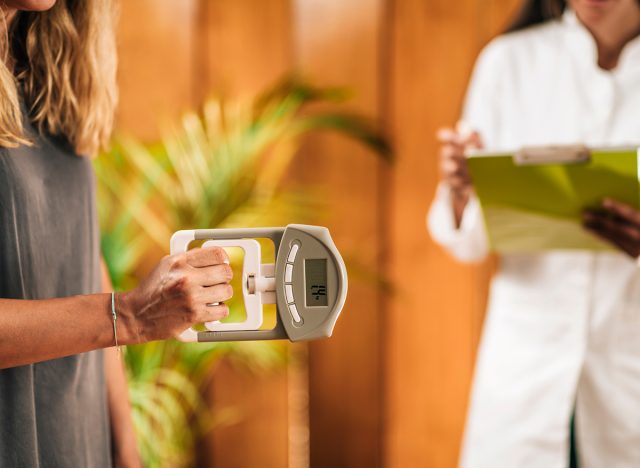
To perform a grip strength test, you’ll need a handgrip dynamometer: an inexpensive device found in many gyms, physical therapy offices, or online for home use. If you don’t have access to one, we’ll offer an alternative below.
How to do it:
- Stand or sit upright with your arm at your side and your elbow bent at 90 degrees.
- Hold the dynamometer in your hand, squeezing as hard as you can for 3–5 seconds.
- Perform the test with both hands, resting for a minute between attempts.
- Record your highest score in kilograms (most devices will display this).
No dynamometer? Try the farmer’s carry test: Grab two heavy dumbbells or grocery bags, walk for 30–60 seconds, and assess how long you maintain a strong, controlled grip. It’s not as precise, but it offers a functional way to evaluate real-world grip endurance.
What Your Results Say About You
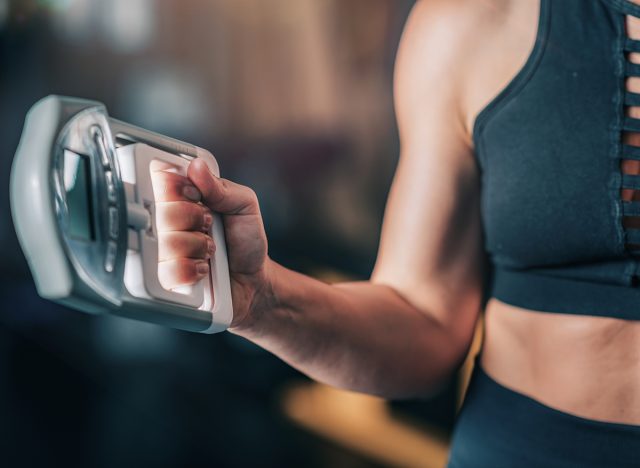
Grip strength norms vary by age and sex, but here are some general benchmarks for you to see where you stand:
- Excellent (Men): 105+ lbs (48+ kg)
- Excellent (Women): 70+ lbs (32+ kg)
- Average (Men): 85–104 lbs (38–47 kg)
- Average (Women): 55–69 lbs (25–31 kg)
- Below Average (Men): Under 84 lbs (38 kg)
- Below Average (Women): Under 54 lbs (24 kg)
If you’re in the “excellent” range, congratulations! You likely have strong muscle mass and coordination and a lower risk of injury.
If you’re in the “average” range, you’re doing well but have room to build more strength and endurance.
If you fall below average, it’s a sign that your foundational strength may be lagging, which could affect everything from balance to long-term mobility.
Think of this test as a wake-up call, not a verdict. It tells you your body’s strength today and what needs work moving forward.
Results Without a Dynamometer: What the Farmer’s Carry Tells You
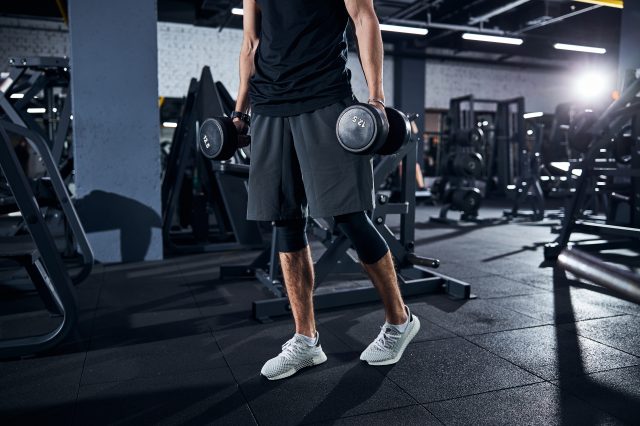
If you don’t have access to a dynamometer, but still want an exercise that gives you meaningful insight into your grip strength and overall conditioning, try the farmer’s carry. Here’s how to interpret your performance:
- Under 30 seconds: Your grip may need work. This could signal early fatigue in your forearms and shoulders, and a weaker connection between your upper and lower body. Build up gradually with progressive overload.
- 30–60 seconds: You’re in the average range. You’ve got a decent base of strength, but there’s room to improve your muscular endurance and core stability.
- 60–90 seconds: Strong performance. This shows well-balanced strength and endurance. Your grip supports more advanced training and heavier lifts.
- 90+ seconds with clean form: Excellent. You have elite-level grip strength, great posture, and excellent neuromuscular control. This level of performance bodes well for injury resilience and long-term fitness capacity.
Keep in mind, the goal isn’t just to last longer, it’s to maintain proper posture, shoulder alignment, and core engagement throughout the carry. Quality matters just as much as time.
Why Grip Strength Predicts Long-Term Fitness
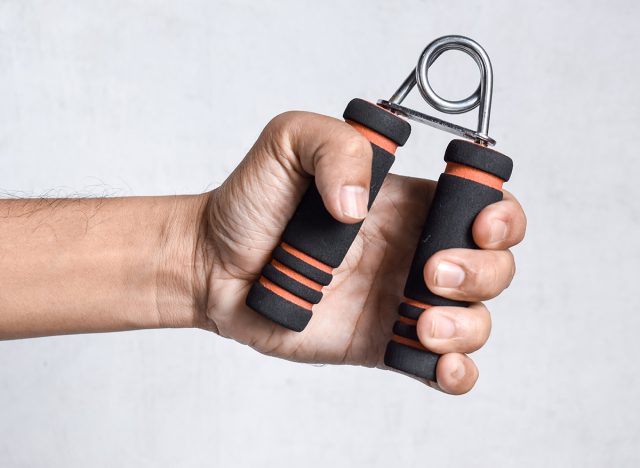
Grip strength is more than a measurement, it’s a metabolic and muscular signal. Rich in nerve endings, your hands connect directly to the forearms, shoulders, and even your posture. Strong grip strength often reflects strong neural drive, good coordination, and robust musculature across the body.
Studies have linked low grip strength to:
- Higher risk of falls and fractures
- Greater likelihood of hospitalization
- Decreased cardiovascular endurance
- Shorter lifespan
A declining grip appears as one of the earliest signs of muscular deterioration with age. Maintaining it means preserving your body’s capacity to lift, carry, stabilize, and move well into the future.
How to Improve Your Grip Strength (And Overall Fitness)
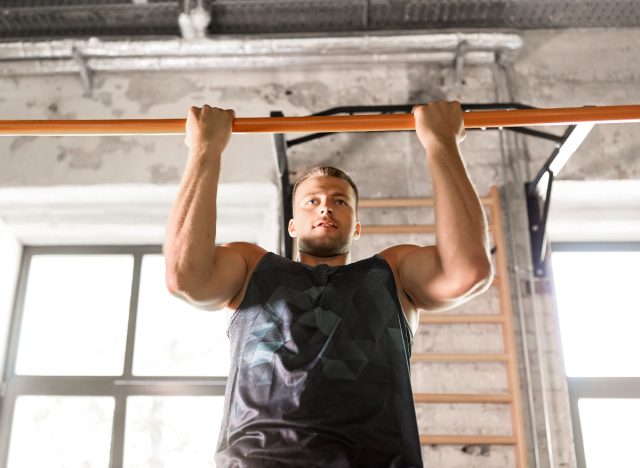
If your score wasn’t where you wanted it, or if you simply want to stay ahead of the curve, start working grip and forearm strength into your training now. These moves will help:
- Dead Hangs: Hang from a pull-up bar for 20–60 seconds at a time.
- Farmer’s Carries: Hold heavy weights and walk for distance or time.
- Towel Rows or Pulls: Wrap a towel around a bar or kettlebell handle to increase grip demands.
- Wrist Curls/Extensions: Train forearms directly with dumbbell curls and reverse curls.
- Squeeze & Hold: Use a tennis ball or gripper device to build hand endurance.
Make these part of your regular weekly routine and retest your grip every 4–6 weeks. Not only will your grip improve, but so will your lifts, your joint stability, and your long-term physical confidence.